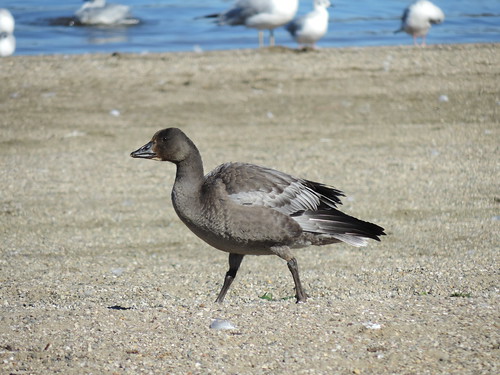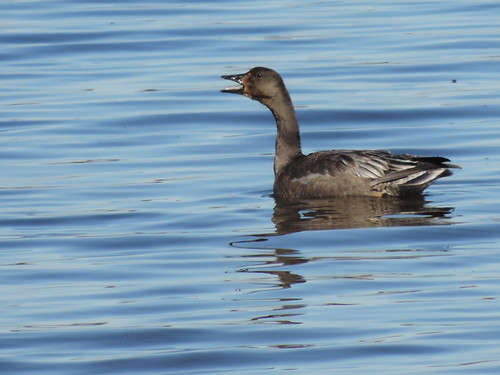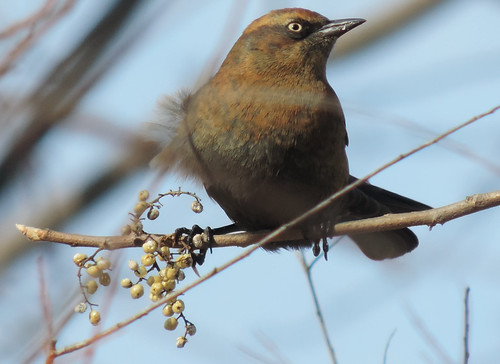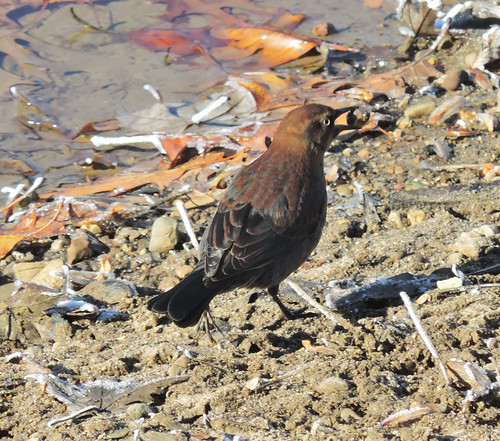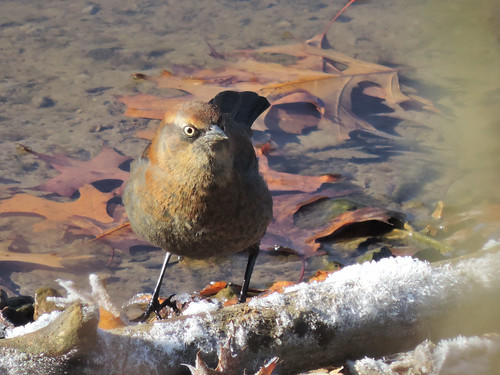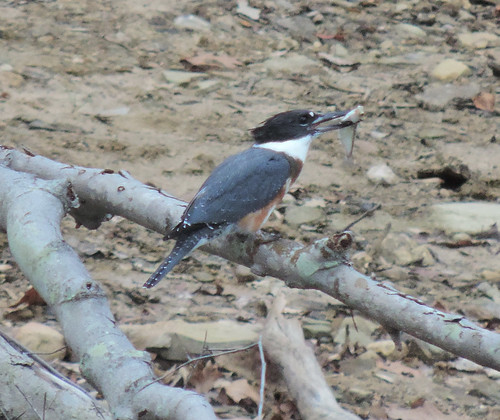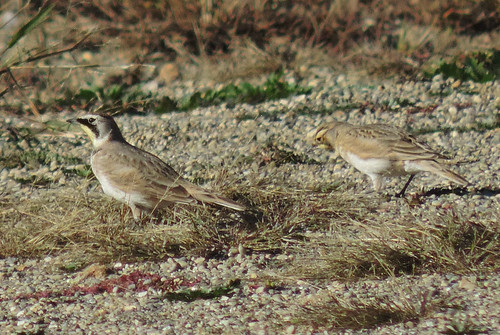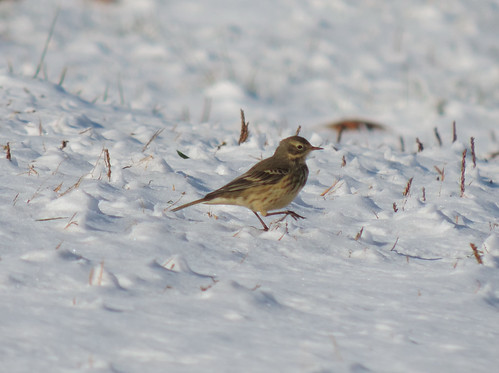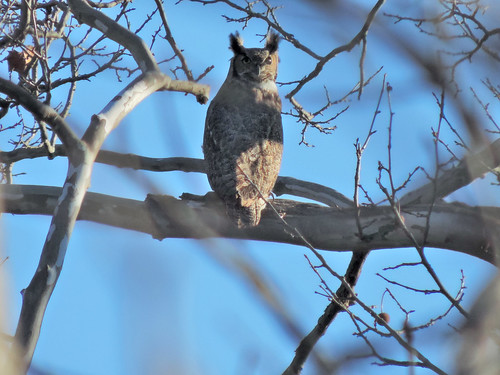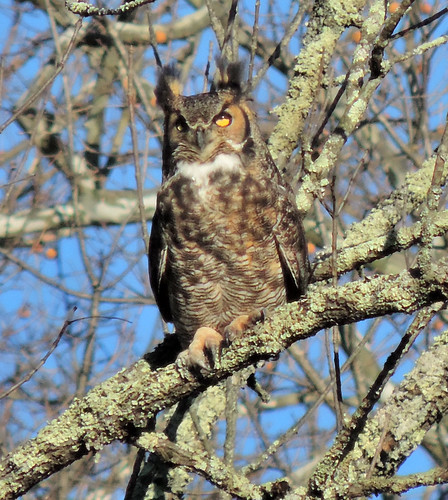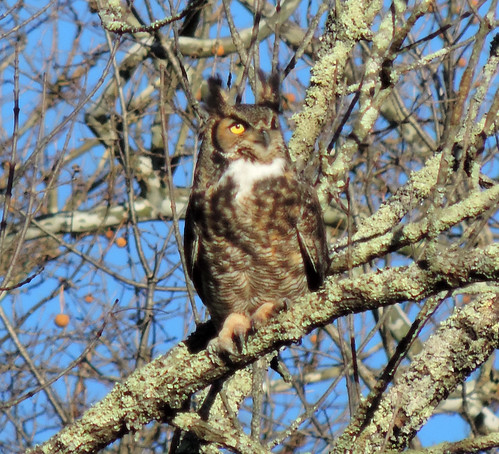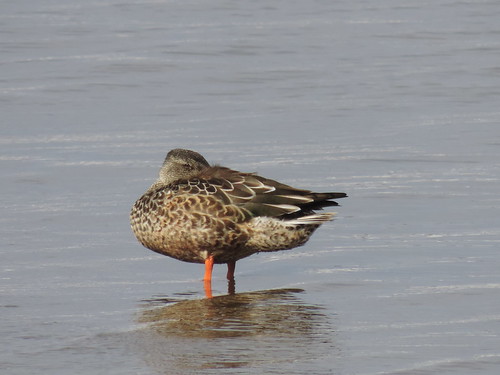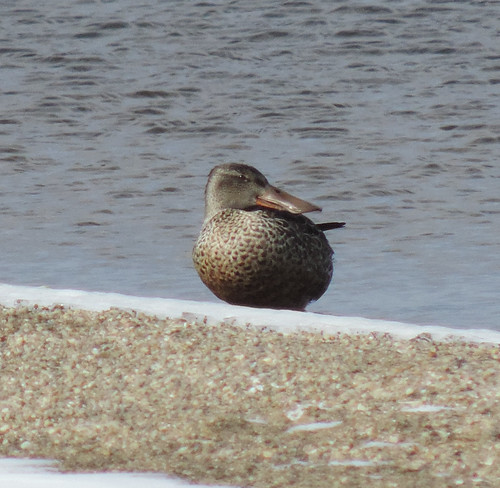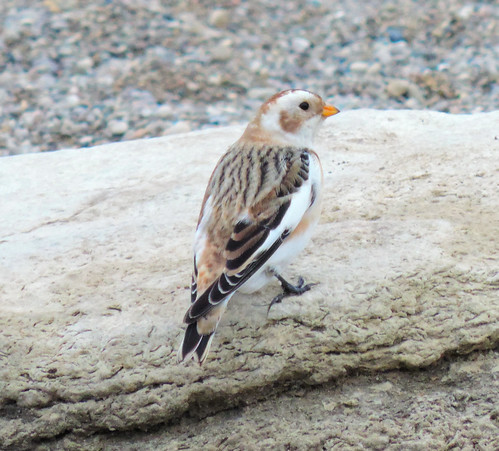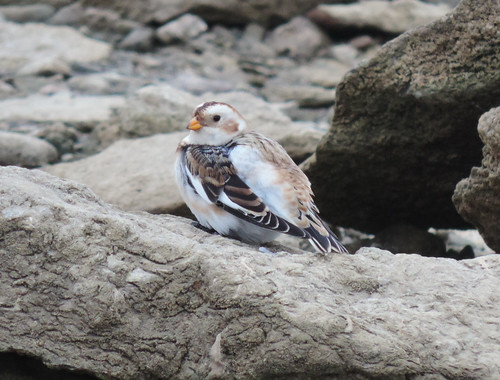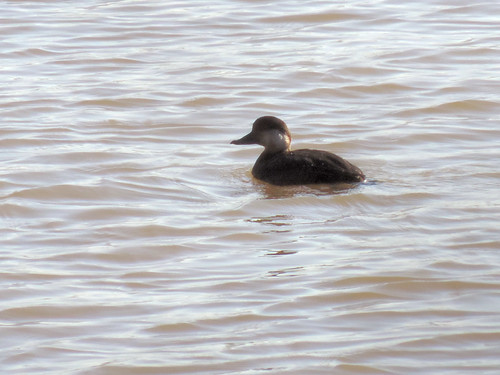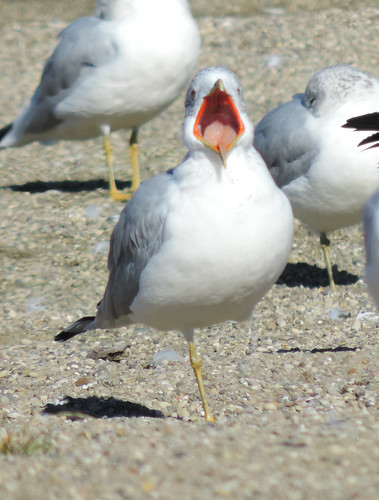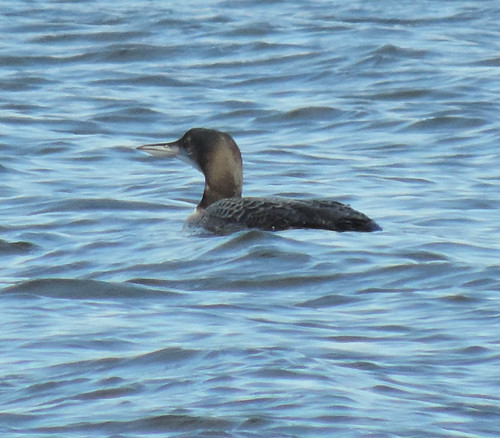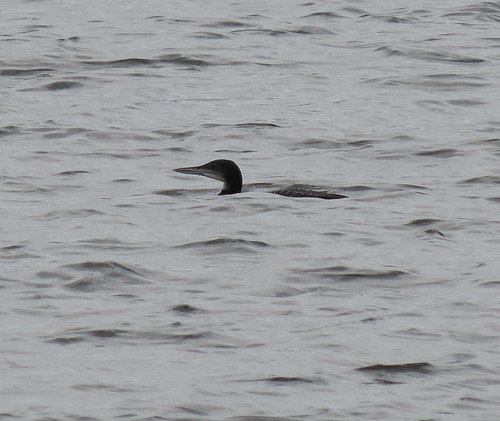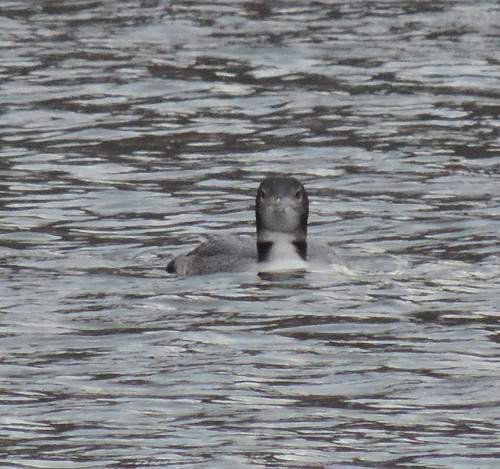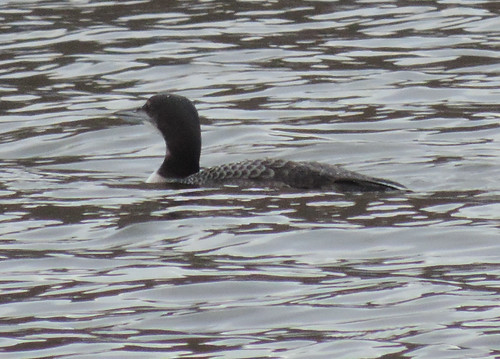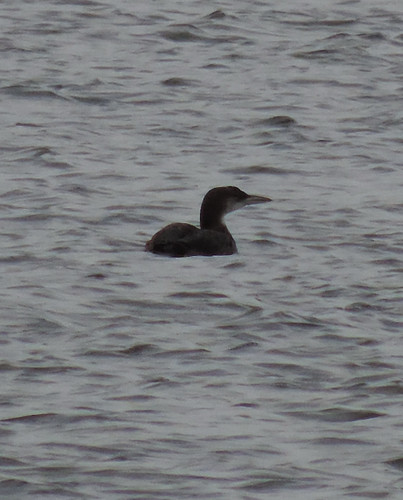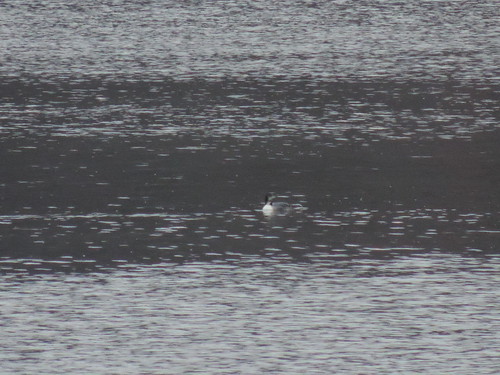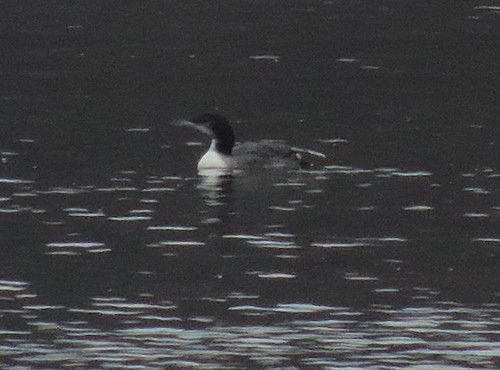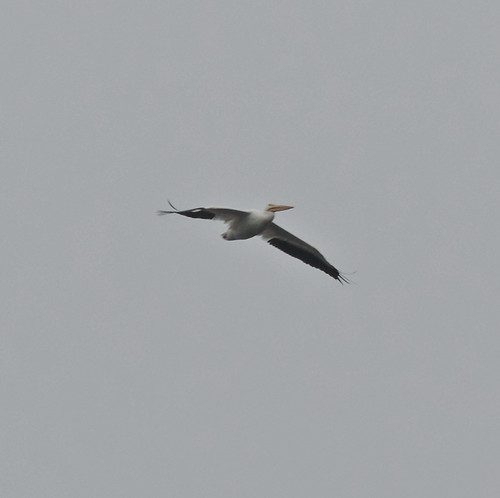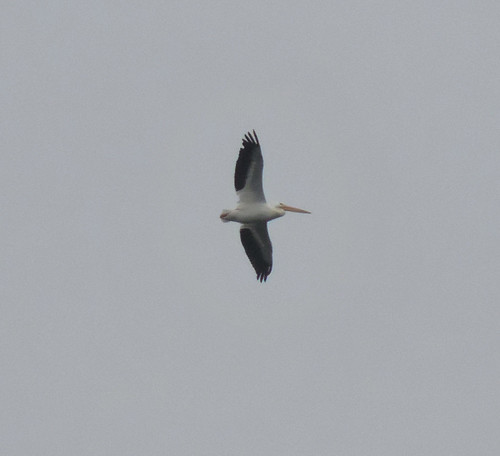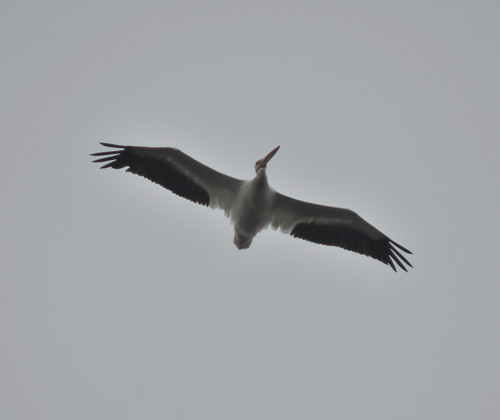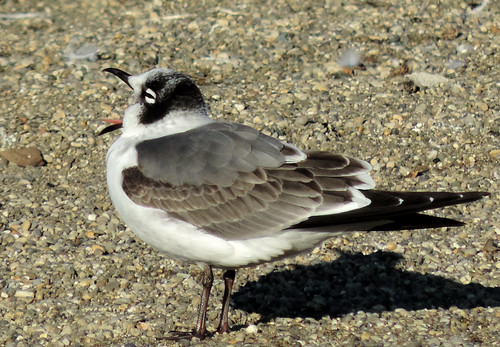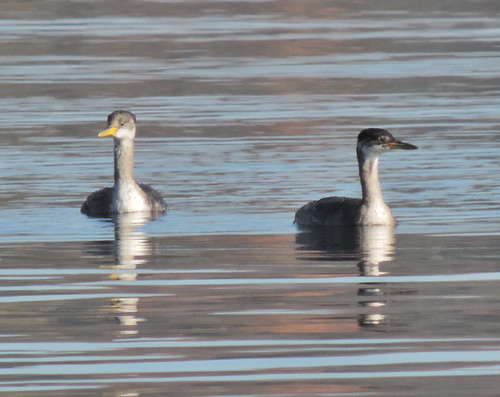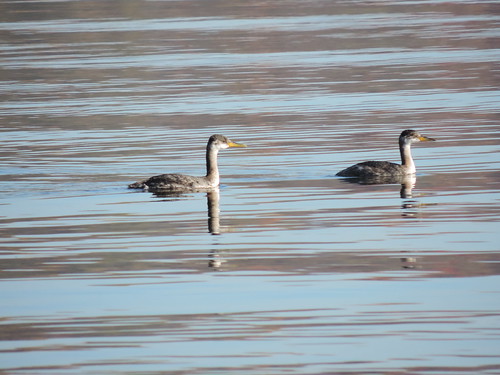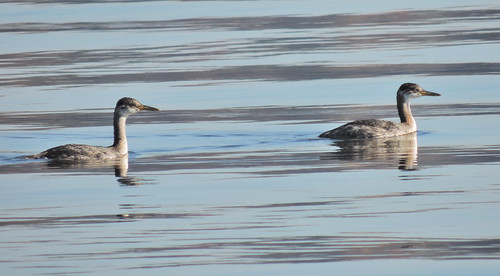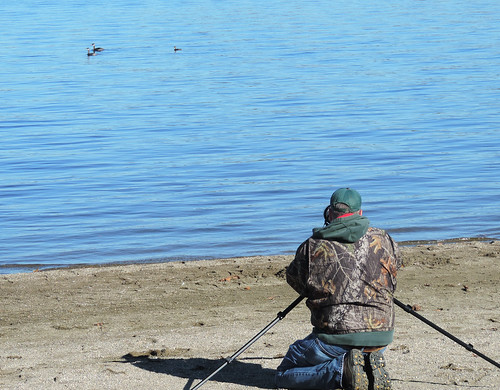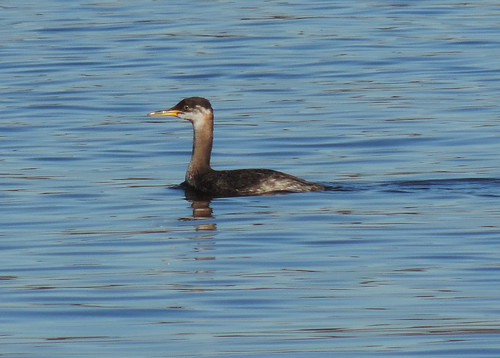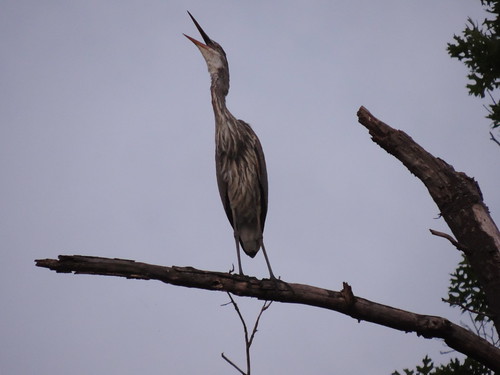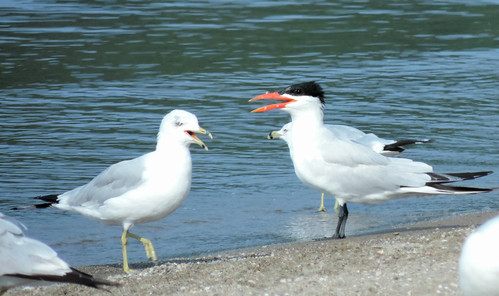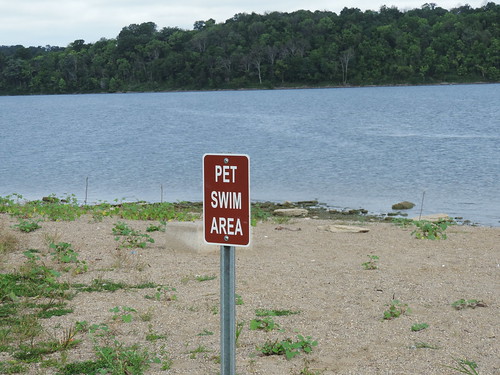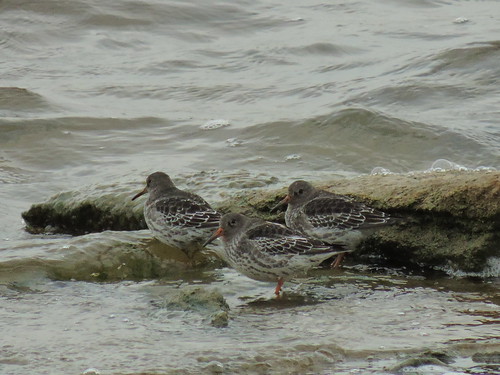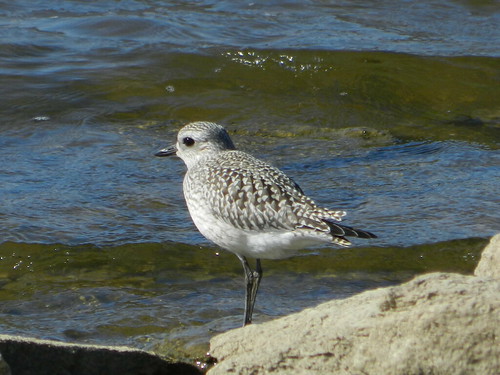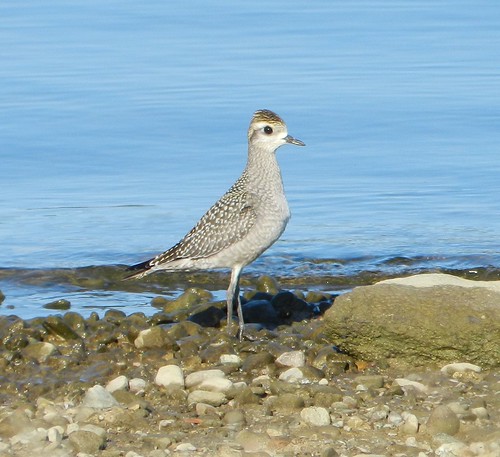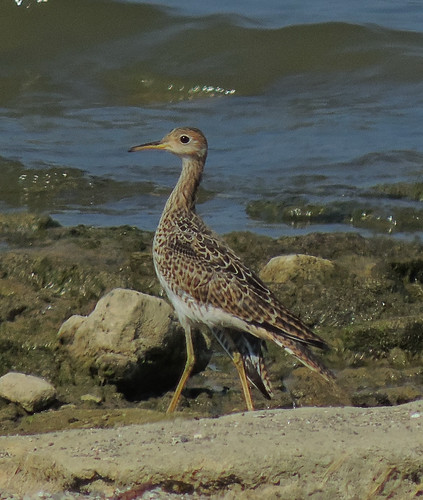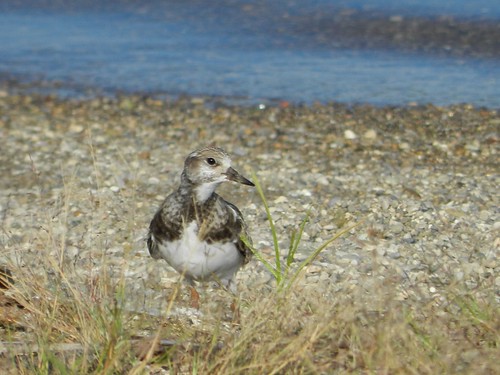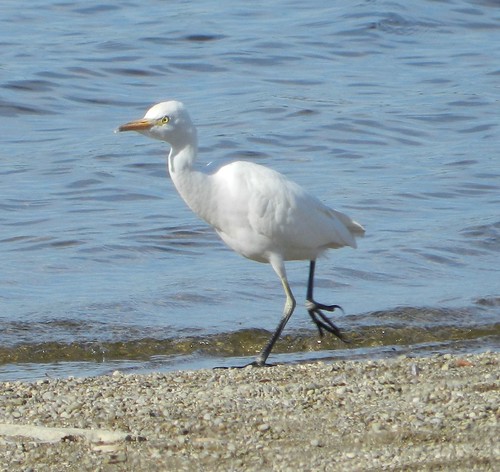This winter started out like last winter, below normal cold with snow, but quickly returned to a more normal type winter for this area. Many northern birds looked to at first repeat the migration pattern of last year. But as it warmed back up, the birding seemed to slow back down dramatically.
While I love rarities and life birds, I also enjoy some of the more common winter resident and migrant birds in the area. This bird showed up one day this early winter and stayed for quite a while at the south beach at East Fork State Park. It had become some what of a celerity. This immature Blue morph Snow Goose hung around the beach and was quite approachable by people. I don't think it has ever seen humans before.
When I first saw this goose, I wasn't for sure that it was a Snow Goose. It was sound asleep among the gulls for a long while. I played a recording of Snow Goose on my cell phone, and the bird jumped up and walked right up to me. It followed me around for a little while. It called back to the phone, so I stopped playing it.
The goose is no longer on the beach. I wonder where it went?
I did manage to run across a gorgeous Rusty Blackbird one cold morning. It was eating poison ivy berries all by itself. I sometimes run into lone rusties in this area.
When it turned the other way, I noticed that it had a leucistic (white) feather or two on its wing.
Look at that eye, that rusty scaling on the back, such a gorgeous bird! Here, it was eating an acorn.
It became cloudy shortly after these shots. I noticed a distant Belted Kingfisher whacking a shad against a dead tree branch at the end of the cove I was in.
Horned Larks and American Pipits have been plentiful on the beach early this winter. I had a flyover Snow Bunting and Lapland Longpur, but nothing would land to get a picture.
While searching for winter owls like Long-eared or Northern Saw-whet, I have only come across Eastern Screech and Great Horned Owls. This particular Great Horned put on a shown recently in the late morning in daylight. The crows harassed it constantly.
Here, the owl was actively calling!
I get cold chills every time I get close to a wild Great Horned. Their power and coolness is just awesome!
There have been good winter ducks trickling in, but nothing like last winter yet. Here is an odd sight that I don't see much. Ducks on the beach, in this case, a female Northern Shoveler.
I finally found a Snow Bunting that decided to stay on the beach at East Fork State Park for a few days. I love Snow Buntings, as most people do.
There was a Snowy Owl seen briefly in Butler County. I was out birding the day of its presence, but was not able to get up to see it. It was gone the next day. Having only ever seen one snowy, I would love to see another. Hoping to have one appear here this winter!
I do bird other places other than East Fork State Park. Seeking a change of scenery and maybe something exciting, I decided to hit the Ohio River recently. The only cool bird seen was this Black Scoter. I wasn't sure what it was at first, but I was able to see it pretty close after repositioning in the brush. This bird was at Crooked Run Nature Preserve in Chilo, Ohio.
Since I plan on birding some early tomorrow, I will rap things up. I will leave you with this advice:
Always find time to spend outdoors. As I find that things seem to be changing fast around me, I can always slow time down by spending time in nature.
